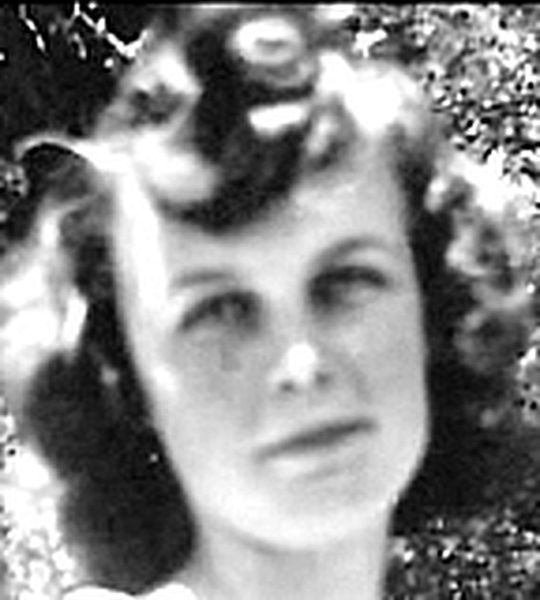Missing Person Photos
A missing person is a person who has disappeared and whose status as alive or dead cannot be confirmed as their location and condition are unknown. A person may go missing through a voluntary disappearance, or else due to an accident, crime, death in a location where they cannot be found (such as at sea), or many other reasons. In most parts of the world, a missing person will usually be found quickly. While criminal abductions are some of the most widely reported missing person cases, these account for only 2 to 5 percent of missing children in Europe.
By contrast, some missing person cases remain unresolved for many years. Laws related to these cases are often complex since, in many jurisdictions, relatives and third parties may not deal with a person's assets until their death is considered proven by law and a formal death certificate issued. The situation, uncertainties, and lack of closure or a funeral resulting when a person goes missing may be extremely painful with long-lasting effects on family and friends.
A number of organizations seek to connect, share best practices, and disseminate information and images of missing children to improve the effectiveness of missing children investigations, including the International Commission on Missing Persons, the International Centre for Missing & Exploited Children (ICMEC), as well as national organizations, including the National Center for Missing & Exploited Children in the US, Missing People in the UK, Child Focus in Belgium, and The Smile of the Child in Greece.

Resources for Missing Persons
According to current statistics, 4,000 people in the United States go missing every day.
Sometimes a child suddenly vanishes from the bus stop or the local park or even from their own yard or bedroom. Or a teenager doesn�t return home after a walk to the neighborhood grocery store or a bike ride or a party with friends.
Other times, an adult is mysteriously absent from their job or neighbors haven�t seen them for several days, and family and friends haven�t heard from them either.
Missing Person Photos
Joan Ellen Hansen




Joan, date, approximate 1962
Date Missing 08/10/1962
Missing From
King County, Washington
Missing Classification Endangered Missing
Sex Female
Race
White
Date of Birth 07/19/1932 (90)
Age 30 years old
Height and Weight 5'8, 120 pounds
Associated Vehicle(s) Chevrolet Biscayne (accounted for)
Markings and/or Distinguishing Characteristics Caucasian female. Brown hair, brown eyes. Joan may use the last names Cooper and/or Hough. Some agencies refer to her as Joann or Joanne Hansen.
Details of Disappearance Joan was last seen in King County, Washington on August 10, 1962. She planned to meet her sisters at the World's Fair in Seattle, Washington, but never arrived. She was talking on the phone with a friend, Patricia Martin, and suddenly said, "Oh my God, he's in the basement. He's coming." Joan screamed and the line went dead.
Martin repeatedly called Joan back and at first no one answered the phone. After several attempts, Joan's estranged husband, Robert Milton "Bob" Hansen, came on the line. Martin asked where Joan was and Robert said, "She's with you."
There were no usable fingerprints, no signs of foul play and no indication of Joan's whereabouts. She normally kept her car in a neat and clean condition. An extensive search of the area turned up no sign of her and a private detective her parents hired was also unable to locate her.
Joan married a man she'd went to school with and had two children by him, but her first marriage ended in divorce after the couple's daughter died of Sudden Infant Death Syndrome (SIDS) and Joan had an affair with another man. During this period she was hospitalized briefly for emotional problems caused by the stress in her life.
After her divorce, in either 1956 or 1957, she married Robert, who made a living as a carpenter and fisherman. They had two sons and one daughter during the first three years of their marriage.Robert severely beat Joan's oldest son when he was about six years old, injuring the child so badly that he couldn't walk afterward. The boy stayed with Martin for two months, after which his father, Joan's ex-husband, filed for custody.
Robert also physically abused Joan on a regular basis, even while she was pregnant, and the couple's children were afraid of him. She told Martin she was afraid for her life. Robert refused to let her tell the children about any of their relatives on her side of the family; they didn't even know about her oldest son.
In May 1962, Joan moved in with Martin and went to an attorney, told him about the abuse, showed him her bruises and filed for divorce. She and Robert fought bitterly over the division of the family's assets (worth $300,000), and on August 8, Joan got a restraining order against him. The order required him to vacate the family home and let Joan move back into it.
Two days later, she disappeared. Robert reported her missing on August 15.
Joan's attorney continued the divorce action in her absence. On November 21, the divorce was granted. Robert denied abusing Joan, accused her of stealing $8,000 from him, and sought to keep all the property and assets, but the judge ruled there was sufficient evidence to indicate Joan had been abused by her husband.
She was given 40% of the marital property and Robert got 60%. The court ordered that if she did not return alive, her share would be held in trust for her children until they came of age. In spite of the court order, Joan's share of the property eventually came under Robert's control and their children got nothing.
Joan never used her Social Security number after her disappearance, or left any other paper trail. She was declared ly dead in 1975. Robert raised their children alone after the divorce and made a fortune in the construction business and with rental properties he owned.
He was arrested several times over the years for assaulting people and destroying property in anger. Once he advertised for a housekeeper and, when a woman responded to the ad, he kept her on his property against her will for three days before she escaped.
Police briefly suspected he was the Green River Killer, a serial murderer of prostitutes who operated in the Seattle/Tacoma area and was responsible for numerous disappearances as well as homicides. The Green River Killer was eventually identified as Gary Leon Ridgway.
Robert spent his later years traveling back an forth between Washington state and Costa Rica in Central America. He struck up relationships with women in that country and got married and divorced at last twice, possibly more times. He was denied Costa Rican citizenship, however, and eventually moved back to the United States for good.
The Hansen children grew up believing Joan had abandoned them. Joan and Robert's daughter became addicted to drugs as a young adult and died of an overdose in the 1980s. Their two sons, who described Robert as an extremely abusive parent, now believe he murdered their mother. The police have long considered him a person of interest in her .
Robert died by suicide in his Auburn, Washington home in August 2009, leaving an estate worth $5 million. He was 84 years old. He never faced charges in his first wife's disappearance.
In his will, Robert wrote Joan had disappeared years ago and, if she was alive, she was to inherit nothing. He also disinherited his children; by the time of his death he'd been estranged from them for years. In December 2009, his sons filed a wrongful death suit against his estate, alleging he'd caused their mother's death. They were awarded $100,000 in damages.
For years after her disappearance, there were rumors that Joan's body was buried beneath a barn on a farm in the Kent Valley along the Green River, on property the Hansen family had once owned. The barn had originally had a dirt floor, but a concrete floor was poured around the time of her disappearance.
The building has since been demolished and Kent-Des Moines Road now runs over where it used to be. In 2006, at Joan's son's request, investigators examined the road with ground-penetrating radar. No evidence was located, however. Joan's remains unsolved.
The noted true crime writer Ann Rule lived near the Hansen family in the 1960s. She didn't know Joan and didn't hear about her disappearance when it happened, but her children knew Joan's children and had gone to school with them. Rule profiled Joan's in her 2009 book, Don't Look Behind You: And Other True s, the 15th book in her Crime Files series.
Investigating Agency
King County Sheriff's Office
206-296-0970
Other
The Doe Network
The King County Journal
The Seattle Post-Intelligencer
KOMO News
Unsolved in the News
NamUs
Don't Look Behind You: And Other True s
Missing Person Photos
A missing person is a person who has disappeared and whose status as alive or dead cannot be confirmed as their location and condition are unknown. A person may go missing through a voluntary disappearance, or else due to an accident, crime, death in a location where they cannot be found (such as at sea), or many other reasons. In most parts of the world, a missing person will usually be found quickly. While criminal abductions are some of the most widely reported missing person cases, these account for only 2 to 5 percent of missing children in Europe.
By contrast, some missing person cases remain unresolved for many years. Laws related to these cases are often complex since, in many jurisdictions, relatives and third parties may not deal with a person's assets until their death is considered proven by law and a formal death certificate issued. The situation, uncertainties, and lack of closure or a funeral resulting when a person goes missing may be extremely painful with long-lasting effects on family and friends.
A number of organizations seek to connect, share best practices, and disseminate information and images of missing children to improve the effectiveness of missing children investigations, including the International Commission on Missing Persons, the International Centre for Missing & Exploited Children (ICMEC), as well as national organizations, including the National Center for Missing & Exploited Children in the US, Missing People in the UK, Child Focus in Belgium, and The Smile of the Child in Greece.

Resources for Missing Persons
According to current statistics, 4,000 people in the United States go missing every day.
Sometimes a child suddenly vanishes from the bus stop or the local park or even from their own yard or bedroom. Or a teenager doesn�t return home after a walk to the neighborhood grocery store or a bike ride or a party with friends.
Other times, an adult is mysteriously absent from their job or neighbors haven�t seen them for several days, and family and friends haven�t heard from them either.
Missing Person Photos